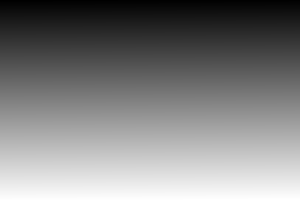| Copyright | (c) Alexey Kuleshevich 2016 |
|---|---|
| License | BSD3 |
| Maintainer | Alexey Kuleshevich <lehins@yandex.ru> |
| Stability | experimental |
| Portability | non-portable |
| Safe Haskell | None |
| Language | Haskell2010 |
Graphics.Image.Interface.Vector
Contents
Description
- makeImage :: Array VU cs Double => (Int, Int) -> ((Int, Int) -> Pixel cs Double) -> Image VU cs Double
- fromLists :: Array VU cs e => [[Pixel cs e]] -> Image VU cs e
- fromUnboxedVector :: Array VU cs e => (Int, Int) -> Vector (Pixel cs e) -> Image VU cs e
- toUnboxedVector :: Array VU cs e => Image VU cs e -> Vector (Pixel cs e)
- readImageY :: FilePath -> IO (Image VU Y Double)
- readImageYA :: FilePath -> IO (Image VU YA Double)
- readImageRGB :: FilePath -> IO (Image VU RGB Double)
- readImageRGBA :: FilePath -> IO (Image VU RGBA Double)
- data VU = VU
Construction
Arguments
| :: Array VU cs Double | |
| => (Int, Int) | ( |
| -> ((Int, Int) -> Pixel cs Double) | A function that takes ( |
| -> Image VU cs Double |
Create an image with VU (Vector Unboxed) representation and pixels of Double
precision. Note, that for Double precision pixels it is essential to keep values
normalized in the [0, 1] range in order for an image to be written to file
properly.
>>>let grad_gray = makeImage (200, 200) (\(i, j) -> PixelY (fromIntegral i)/200 * (fromIntegral j)/200)
Because all Pixels and Images are installed into Num, above is equivalent to:
>>>let grad_gray = makeImage (200, 200) (\(i, j) -> PixelY $ fromIntegral (i*j)) / (200*200)>>>writeImage "images/grad_gray.png" grad_gray
Creating color images is just as easy.
>>>let grad_color = makeImage (200, 200) (\(i, j) -> PixelRGB (fromIntegral i) (fromIntegral j) (fromIntegral (i + j))) / 400>>>writeImage "images/grad_color.png" grad_color


fromLists :: Array VU cs e => [[Pixel cs e]] -> Image VU cs e Source
Construct an image from a nested rectangular shaped list of pixels.
Length of an outer list will constitute m rows, while the length of inner lists -
n columns. All of the inner lists must be the same length and greater than 0.
>>>fromLists [[PixelY (fromIntegral (i*j) / 60000) | j <- [1..300]] | i <- [1..200]]<Image VectorUnboxed Y (Double): 200x300>

fromUnboxedVector :: Array VU cs e => (Int, Int) -> Vector (Pixel cs e) -> Image VU cs e Source
Construct a two dimensional image with m rows and n columns from a flat
Unboxed Vector of length k. It is a O(1) opeartion. Make sure that m * n = k.
>>>fromUnboxedVector (200, 300) $ generate 60000 (\i -> PixelY $ fromIntegral i / 60000)<Image VectorUnboxed Luma: 200x300>

toUnboxedVector :: Array VU cs e => Image VU cs e -> Vector (Pixel cs e) Source
Convert an image to a flattened Unboxed Vector. It is a O(1) opeartion.
>>>toUnboxedVector $ makeImage (3, 2) (\(i, j) -> PixelY $ fromIntegral (i+j))fromList [<Luma:(0.0)>,<Luma:(1.0)>,<Luma:(1.0)>,<Luma:(2.0)>,<Luma:(2.0)>,<Luma:(3.0)>]
IO
readImageRGBA :: FilePath -> IO (Image VU RGBA Double) Source
Read image in RGB colorspace with Alpha channel.
Representation
Unboxed Vector representation.
Constructors
| VU |
Instances
| Show VU Source | |
| Exchangable VU RS Source | O(1) - Changes to Repa representation. |
| Exchangable VU RP Source | O(1) - Changes to Repa representation. |
| Exchangable RS VU Source | O(1) - Changes to Vector representation. |
| Exchangable RP VU Source | O(1) - Changes to Vector representation. |
| ManifestArray VU cs e => MutableArray VU cs e Source | |
| ManifestArray VU cs e => SequentialArray VU cs e Source | |
| Array VU cs e => ManifestArray VU cs e Source | |
| Elt VU cs e => Array VU cs e Source | |
| data Image VU Source | |
| type Elt VU cs e = (ColorSpace cs, Num e, Unbox e, Typeable * e, Unbox (PixelElt cs e), Unbox (Pixel cs e)) Source | |
| data MImage st VU cs e Source |